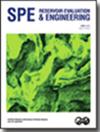轻质油天然裂缝油藏过早结束高压注气试验的经验教训
IF 1.5
4区 工程技术
Q3 ENERGY & FUELS
引用次数: 0
摘要
经过一次和二次开采,墨西哥东南部盆地的成熟陆上和海上油藏中仍有600亿桶石油。毛细管力和粘性力是导致这些油保留在基质孔隙结构(不动油)中的原因。由于压裂强度大,重力不足以抵消这些力。另一方面,实验室测试表明,存在于基质中的油可以通过空气注入发生的放热反应被动员起来。在均质稠油砂岩、稠油砂岩和无裂缝灰岩中,无论规模大小、时间长短,注气都是开采其他方法无法开采的技术和经济资源的可行方法。然而,据我们所知,已发表的文献没有报道任何在天然裂缝性储层中应用注气项目。2015年,在墨西哥的a油田进行了轻质油天然裂缝油藏的空气注入先导试验。在实施试点试验之前,进行了相应的实验室研究,其中包括五次加速量热计(ARC)试验和两次燃烧管(CT)试验。对上述实验工作的分析使我们证实了在储层条件下空气和油发生反应。基于上述发现,进行了中试,在井口压力为4500 psia的情况下,以10 MMscf/D的速度注入空气,持续1.5年,随后是1.5年的生产周期,中试总共为3年。结果表明,燃烧在储层中得到了成功的应用。然而,没有生产出石油。本文讨论了“a”油田提前结束的注气先导试验的结果以及从中吸取的主要经验教训,可以为其他天然裂缝性油藏的设计和后续实施提供帮助。本文章由计算机程序翻译,如有差异,请以英文原文为准。
Lessons Learned from a Prematurely Ended High-Pressure Air Injection Test in a Light Oil Naturally Fractured Reservoir
Sixty billion barrels of oil still reside in the matrix of mature onshore and offshore Mexican reservoirs located in the southeast basins after primary and secondary recovery. Capillary and viscous forces are responsible for this amount of oil retained within the pore structure of the matrix (immobile oil). Gravitational forces are not enough to counterattack these forces due to the high fracturing intensity. On the other hand, laboratory testing demonstrates that oil residing in the matrix could be mobilized by the exothermic reaction that takes place with air injection.
Air injection in homogeneous heavy and light oil sandstones and nonfractured limestones, at small or large scales during short and long periods of time, is feasible for producing resources technically and economically nonrecoverable by other means. However, to the best of our knowledge, the published literature does not report any application of an air injection project in naturally fractured reservoirs.
During 2015, an air injection pilot test was performed in a light oil naturally fractured reservoir in Mexico, referred to as “A” field. The implementation of the pilot test was preceded by its corresponding laboratory study, which consisted of five accelerating rate calorimeter (ARC) tests and two combustion tube (CT) experiments. The analysis of the aforementioned experimental work led us to corroborate that air and oil react at reservoir conditions. Based on the above finding, the pilot test was conducted by injecting air at a rate of 10 MMscf/D with a wellhead pressure of 4,500 psia for 1.5 years, which was followed by a 1.5-year production period giving a total of 3 years for the pilot test.
The results indicate that combustion was successfully applied in the reservoir. However, no oil was produced. This paper discusses the results of a prematurely ended air injection pilot test in “A” field and the main lessons learned from it, which could help in the design and its subsequent implementation in other naturally fractured reservoirs.
求助全文
通过发布文献求助,成功后即可免费获取论文全文。
去求助
来源期刊
CiteScore
5.30
自引率
0.00%
发文量
68
审稿时长
12 months
期刊介绍:
Covers the application of a wide range of topics, including reservoir characterization, geology and geophysics, core analysis, well logging, well testing, reservoir management, enhanced oil recovery, fluid mechanics, performance prediction, reservoir simulation, digital energy, uncertainty/risk assessment, information management, resource and reserve evaluation, portfolio/asset management, project valuation, and petroleum economics.

 求助内容:
求助内容: 应助结果提醒方式:
应助结果提醒方式:


